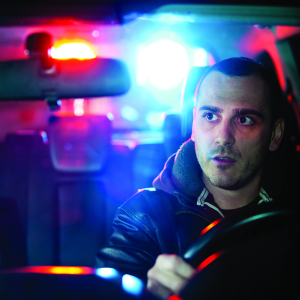Driving under the influence of drugs or alcohol is against the law in California. While most people are aware of the laws against drunk driving, few understand how complex this area of law is. The vast majority of the time, California DUI cases are not as straightforward as they may seem. One of the most misunderstood aspects of California DUI law is the operation element.
Before a judge or jury can find you guilty of a DUI crime, the government must first prove beyond a reasonable doubt that you were “driving” the vehicle. This is referred to as the operation element. In most states, prosecutors can meet the operation element of a DUI by showing that the defendant exercised physical control over the vehicle. However, in California, the law is slightly more favorable to defendants. To be found guilty of a California DUI, the prosecution must prove that you intentionally caused the vehicle to move by exercising physical control over it. Thus, if the vehicle didn’t move, you are not guilty of DUI.
That said, when referring to “movement,” any movement of the vehicle, however slight, qualifies as driving. Additionally, police officers can rely on circumstantial evidence to illustrate that a car had moved, even if they didn’t witness the car moving. For example, say that police officers respond to a call for a single-vehicle traffic accident. When the police arrive, they find a car wrapped around a utility pole. The driver is the only person inside the car, and there is a half-full bottle of whiskey on the driver’s side floorboard. In this situation, police officers would almost certainly arrest the driver for DUI, even though they didn’t observe the car moving. In doing so, they would rely on the following:
- There was only one person in the car; and
- The car had been in an accident.
In this situation, the circumstantial evidence suggests that the person found in the driver’s seat intentionally caused the vehicle to move by exercising physical control over the vehicle. While there is the possibility that someone switched seats with the driver, that is a defense that must be raised at trial.
Another common example would be if police officers find someone passed out behind the wheel of a car. In this case, the evidence that the car was moving is not as strong. However, police may look to the following to determine if the person was “driving” the car.
- Were the keys in the ignition?
- Was the hood of the car warm?
- Where was the car parked?
Are You Facing California DUI Charges?
If you are facing California DUI charges, it is important that you do not give up hope. There are many possible defenses that could result in dismissal or an acquittal after trial. At the Law Office of Susan L. Hartman, we represent clients charged with all types of DUI offenses. For more than ten years, Attorney Hartman has been exclusively handling California DUI cases. She has in-depth knowledge of all applicable laws and defenses, which she uses to aggressively defend the rights of every client she serves. To learn more, and to schedule a free consultation, reach out to the Law Offices of Susan L. Hartman by calling 619-260-1122 today.
 San Diego DUI Lawyers Blog
San Diego DUI Lawyers Blog

